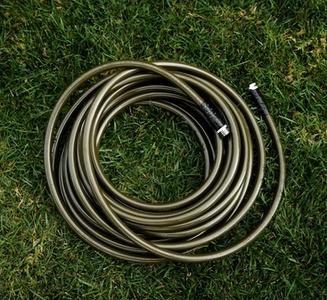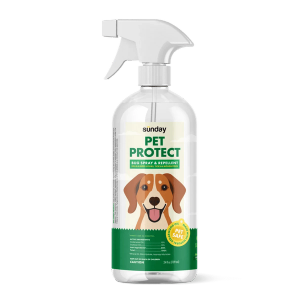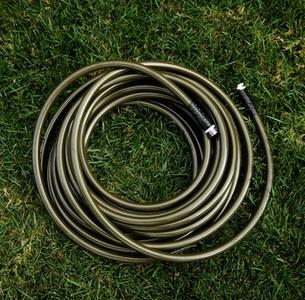First, the science behind why we mow lawns
Beyond maintaining a uniform height for general aesthetics, personal recreational reasons—and perhaps potential HOA or city fines—here’s the science behind why we encourage mowing at Sunday:
- Mowing helps reduce weeds that are intolerant of mowing.
- Mowing promotes lateral growth (grass spreading and thickening) across your lawn.
- Mowing helps promote deeper rooting and more stress-resilient grass.
When your lawn is mowed regularly and properly, it helps you maintain a thick, green, and generally, weed-free lawn. Niiice.
What is 'No Mow May'?
It's a pollinator-forward initiative started by Plantlife, a non-profit based out of the UK. 'No Mow May' intends to help increase the number of flowering plants and food resources for pollinators by not mowing.
By not mowing in May, weeds like dandelions, clovers, and violets can flower. As a result, these more hardy plants help early spring pollinators find more foraging opportunities before other spring blooms emerge.
It all seems really great. But is it?
Potential risks of 'No Mow May'
However, No Mow May is not for everyone—and it can even have longer-term negative effects on your lawn or the fines you incur from your HOA.
For starters, you won't be able to fertilize your lawn anytime during May. More importantly, with no mowing throughout the entire month of May, you actually run the risk of dangerously stressing your grass right before the heat of summer sets in. A move you don't want to make if you want to maintain your green lawn.
Why you should 'Mow High Through July'
So we say ditch the No-Mow May mentality and try mowing high through July. And we're not talking about that type of green—we're talking about the mowing height on your green lawn.
Ideally, when you mow high, you keep your lawn at the longest blade level possible for your grass type. This management helps your lawn:
- Grow deeper roots
- Doesn’t limit pollinator activity
- Helps to reduce fuel emissions
Most importantly, it avoids the damaging risks of a complete mowing halt. Plus, it's a great option for any lawn.
How to 'Mow High Through July'
Are you ready to mow high? We know we are. Get ready to help your lawn grow deeper roots, stay on track to withstand the summer heat, and reduce your mowing emissions if you're still using gas.
Plus, you can still make small changes to help your local pollinators, too!
Raise your mower blades
Raise your mower blade to the mowing height level for your grass type. This is 3 inches for warm-season grasses and 4 inches for cool-season grasses.
Increase time between mows
Extend mowing by a couple of days or add a week between mowing—for example, every other week instead of weekly.
Maintain your mower and blades between mows. This will help keep your higher cuts sharp and your lawn in good shape.
Sunday Tip:
Think you'll have excess clippings? We've got you covered. Compost them or utilize them as “mulch” in garden beds or around trees.
Introduce low-mow and pollinator-friendly grass seed
Seeding clover grass mixtures increases the number of flowering plants in the lawn, which can withstand mowing and provide resources for pollinators. While introducing fine fescue mixtures suitable for less-mowed lawn environments is a great option, too!
Sunday recommends
- Pollinator-friendly: Lucky Lawn Grass Seed
- Low mow: Shade Select Grass Seed
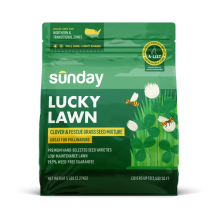
Lucky Lawn Grass Seed
- Pollinator-friendly!
- A-LIST–approved varieties
- Made for cool-season lawns
- Fescue and microclover seed mix
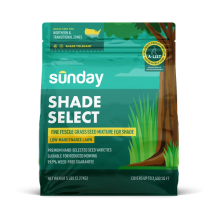
Shade Select Grass Seed
- Low mow lawn option!
- A-LIST-approved varieties
- Made for cool-season lawns
- Fine fescue grass seed mixture
Is mowing high right for you?
It’s probably the right thing for you if you can say yes to the following:
I know what to do with excess grass
We mean, you know what to do with excess grass clippings. If you don't, try utilizing them as “mulch” in garden beds or compost them.
I know my HOA guidelines and city ordinances
Most cities are likely not opposed to 3-4 inches of grass these days. But if you're unsure or live in a home subject to city ordinance or HOA restrictions, you might want to check how tall your grass can get to determine whether you can mow high. Otherwise, this can lead to fines if the lawn is not maintained according to set standards.
I know the proper wait time between mows
The average lawn grows rapidly from May through July, so you'll need to be flexible on your mowing routine to catch it at 3-4 inches. If you let it go unmowed, it can cause your grass to get too long and difficult to mow.
I know I may still need to control weeds
In general, spot treatment for weed control is good during this time. Treat weeds with Sunday’s Weed Warrior and Dandelion Doom as needed.
Sunday Tip:
If you need to spot-treat flowering weeds, remove flowers before treating them to reduce the impact on pollinators.
Let's get growing
Our lawn engine uses satellite data to map out your lawn size and determine things like average rainfall, common weeds, and pest activity.











